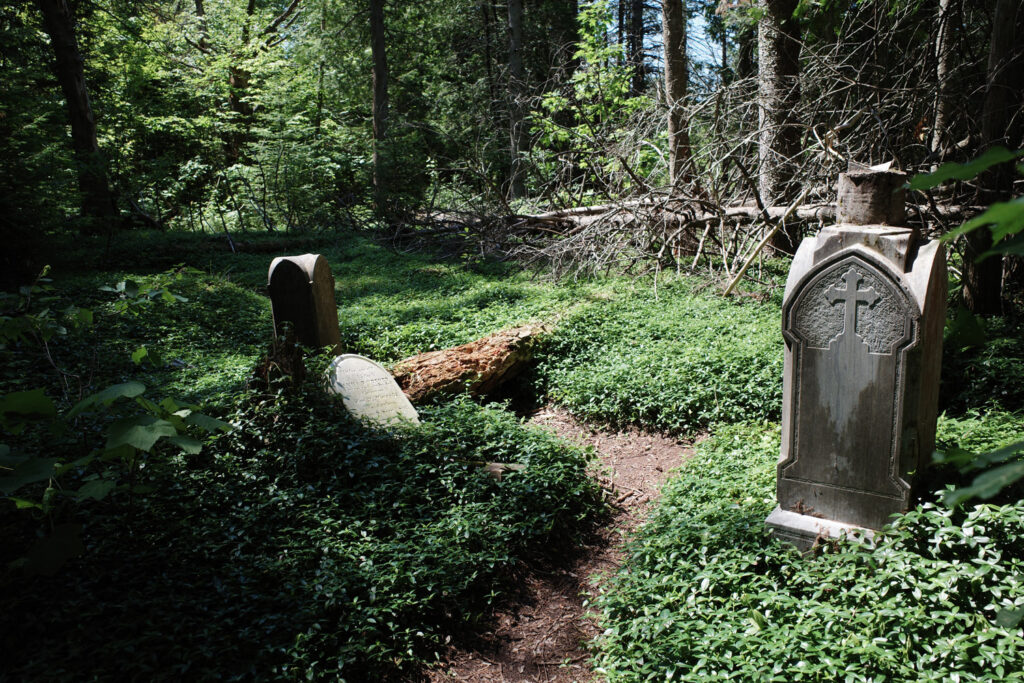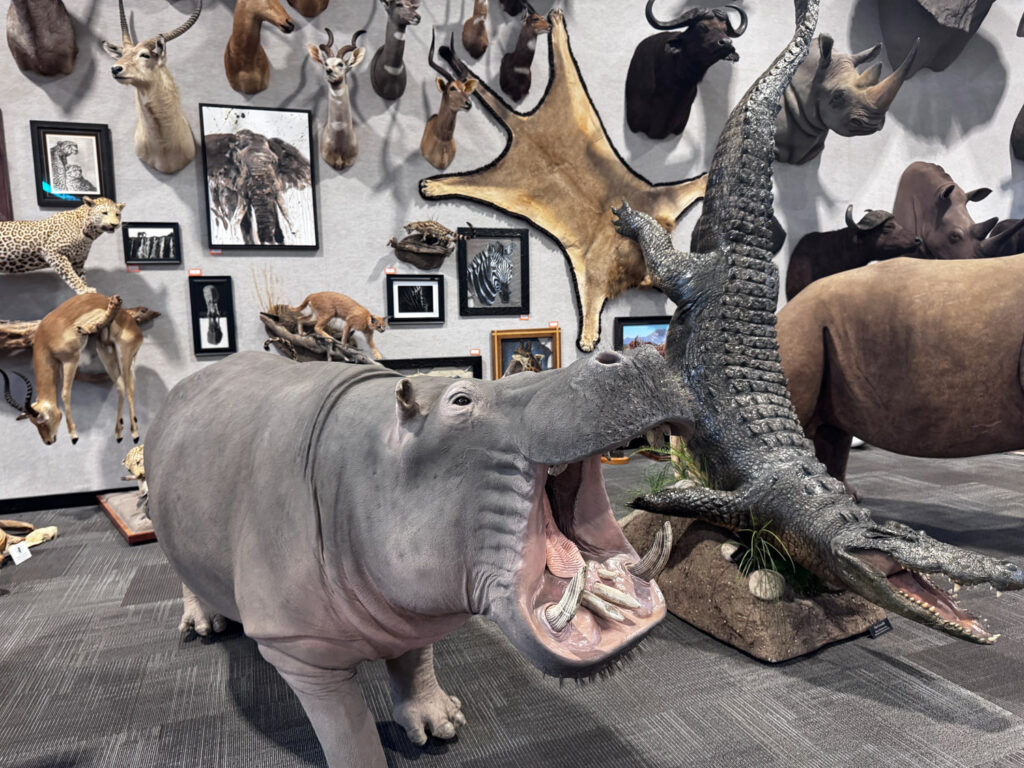The Keweenaw Peninsula is the end of the earth. The outpost of the outpost. South Haven to Copper Harbor is a 10-hour drive. Far beyond the Mackinac Bridge, this rocky piece of lonely earth stabs defiantly into the unforgiving waters of Lake Superior.
I’m in the Keweenaw in search of Copper Country ghost towns. Any relics or signs from the copper mining past. I start my search in Houghton, head to Freda, Delaware Mine, and finally, Clifton.
People have come, but few have stayed. In the 1800s, there was a copper boom in the Keweenaw. Mining companies decided to dig here. Countless shafts penetrated deep into this northern soil. Thousands of men in dark mines wrestled precious metal from the earth. Towns sprung up, houses were built, families were made, life was lived.
Then, one by one, the shafts went quiet. The mines closed. The men left. The houses sat abandoned. Floorboards rotted. The streets overgrown. The settlements were slowly stripped down over the years, and nature struck back at man’s creation. But still, after all these years, scattered remnants of this lost world remain. Silent ghost towns littered the peninsula.
Freda
Driving northwest from Houghton, the roads are empty. Small one-story cabins that haven’t been opened in years hide in the shady overgrowth. A bar appears in the middle of nowhere. Schmidt’s Corner. An Old Style sign hangs high above an empty parking lot. A ramshackle wooden sign for the town of Freda peaks out from bushes on the left side of the road. It’s falling over and the paint is chipping. The frozen wind beats this little wooden sign into oblivion winter after winter. No one comes here. No one repairs it.
I am in Freda 15 minutes later. It was once a busy mining town, but after the mill closed in 1967, Freda began shrinking. There was a post office once. That closed too. The building was turned into the Superior View Restaurant. Then that closed. Today, Freda is part living and part dead.
People do still live here. I see nice houses with mowed lawns. A brand new truck sits in a driveway. But they live among ghosts. Hollow structures and crumbling vehicles rust just beyond the trees. A great and terrible abandoned mill. Cracks and gravel permeate the roads. Weeds. A single soul wanders down Second Street. He gives me a confused look as I drive toward the cliff. There’s a small gravel parking lot overlooking the old abandoned mill. A memorial to local veterans of old wars. The fence has been pushed over. Signs warn, “No Trespassing.”
Lake Superior’s waves crash against the shore. Nobody on the beach. The abandoned mill stalks your view. The waves roll under an obsolete smokestack. Barren and desolate. Dead, lifeless concrete. The old Champion Mill sits and waits. It serves no purpose anymore. No one wants anything to do with it. There’s no odd beauty to it, no Instagrammable urban decay. It’s a ghost of the past, waiting around. Menacing. Unwelcome. Too big to ignore.
Any dilapidated, abandoned site is unsettling. It reminds us of the possibility of death. We want to look away. In Freda, you can’t look away. The people live in the ruins of a mining past. No grocery store, no stoplight, no shops of any kind. And yet, a few people remain in this place of contrasts. They wake up every morning and live among the ruins of Copper Country. In Freda, the natural beauty of the northern woods meets the abandoned ghostly mill. The cracking concrete of vanished industry.
Delaware Mine
I’m heading north on my way to the Delaware Mine. The mine opened in 1847, closed in 1887. It was built near a prehistoric mining pit. Thousands of years ago, ancient men mined here. They used their crude tools to break the earth too. Their craggy pit runs between trees in the still forest. The circumstances of this archaic mining and these crude pits are of incredible interest. Maximum mystery. Schizo theories abound. Who really were these archaic miners in the deep frozen north? Where did they go?
They dug their pits to draw copper. Millenia later, men came again to dig pits and draw copper. Both are long gone. We know them through their work. Their relics remain. A dead hand reaches into our time. Many questions and few answers.
I take a dirt road and find the ruins of the Delaware Mine nestled in the woods. You would never know this was once chaotic and busy. Dark stone walls crumbling. Windows gone. Trees grow up from the middle of the old great buildings. I gaze over the vast wooded landscape. The haunting ruins of Delaware Mine behind me. Miles and miles of trees. That’s all I see. No new towns have grown up since the miners left more than a century ago. People haven’t made this their home. This rubble is all that remains. Ghosts of the past undisturbed.
Clifton
I’m on the road heading for Clifton. Clifton was a Copper Country mining town in the mid 1800s. It was north, beyond Calumet, Mohawk, and Ahmeek. It grew up right alongside Cliff Mine. I drive to where Clifton once stood. On M-26 the trees are only getting thicker. No cell service. The cars are fewer. There are no closed roadside bars anymore. No gas stations. No mailboxes.
I catch a glimpse of a small wooden sign on the west side of the road. It looks hand painted. Cliff Mine Cemetery. I pull off on the shoulder and see nothing. No path, no markers, no two-track. Just thick, green forest. I stumble off the road and down a steep hill through the thick grass toward the woods. There is a small opening in the thicket. It can’t be any larger than 16 inches. It looks like it might have been a trail at one time, but it’s hard to tell.
I slowly start making my way through the thick woods. That’s how it is up here. You have road, then some thick grass, then as soon as the woods hit, it’s dense. There’s a tiny creek to my left. Soft sound of water. Long dark shadows on the forest floor. The warm July sun sears through the branches and onto my skin.
Walking deeper into the woods, a fallen tree lies in the middle of the path. I walk over exposed knots of tree roots and soggy earth. Mosquitos pelt my legs. I have no idea where this little path ends. There are no markers of any kind. I have no clue how far the cemetery is. I’m slowly coming around a tight corner and my heart skips a beat. There’s a tombstone. Engulfed by foliage, in the cool shadows of the forest, sunlight splashing against the stone. It’s all alone. No clearing, no fanfare. Still. Forgotten. A bird cries overhead.
I keep walking and come to a clearing. This must be the cemetery. The ground is covered in growth. Fallen trees. A stone tablet rests against a rotting log. Anna R. Kremer. 1857 – 1863. There are more tombstones all around. They are scattered. Some are so old and faded. I can’t make out names or dates. One looks new. There is a fence around the grave. Maria Wife of J. Engels. Born Nov. 19, 1857. Died Aug. 1879. Bugs buzz around my head. The sounds of little animals rustling in the woods. Birds flying above.
It’s eerie standing in this forgotten forest cemetery, deep in the northern stretches of the Keweenaw Peninsula, all alone with these lost graves. These souls left earth in the 1800s. They were buried here, stones were erected as memorials, and then the world forgot them. The woods grew. The living town turned to a ghost and vanished.
There is a new plaque hanging over a tombstone that had fallen and now lies flat on the forest floor. Catherina Baullinger née Wagner. Born at Luxembourg, Europe, on Sept. 12, 1836. Died at Lake Superior on Aug. 12, 1866. Born in the old world, she came across the sea to the new one, died, and was laid to rest here near the end of the earth. Her grave swallowed by the forest.
And yet, not all is forgotten and lost. Someone still comes to Cliff Mine Cemetery. Someone made the plaque for this fallen tombstone. Someone made a fence for Maria Engels. Someone always remembers, even as time takes its toll.
That’s a bit how it feels all across the Keweenaw Peninsula. It’s an empty place. A hard place. Distant. Scattered ruins across this land. Abandoned houses and boarded up bars. Forgotten towns and quiet graves. People come, but few stay. Quiet and severe, beautiful and lonely.
O.W. Root is a writer based in Northern Michigan, with a focus on nature, food, style, and culture. Follow him on X at @NecktieSalvage.



